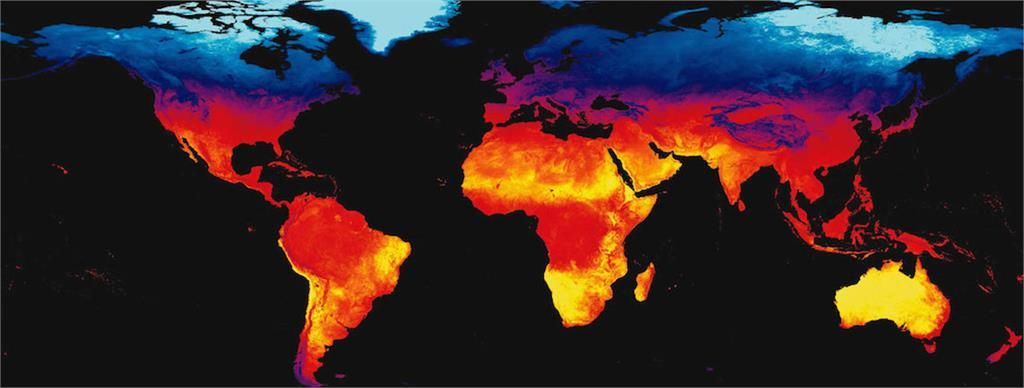- Home
- About
- Courses
- IR/INFO CONFERENCE
- Software
- EXPERT SERVICES
- STANDARDS
- Proposal Templates
- Electrical Systems & Rotating Equipment
- Building Envelopes
- Insulated Roofs
- Photovoltaic Systems
- Pest Detection
- Yachts and Small Craft
- Thermal Imaging of Horses
- Optical Gas Imaging
- Measuring Reflected Temperature
- Measuring Emittance
- Measuring Transmittance
- Distance/Target Size Ratios
- Complete Series
- Resources
- BUSINESS OPPORTUNITIES
- STORE

Director’s Message

Many facilities undergo regularly scheduled shutdowns for preventive maintenance. Performed prior to shutdowns, infrared inspections can help to point out potential problems in electrical and mechanical systems and allow for more effective use of resources during a shutdown.
When planning a scheduled outage, it’s good practice to perform infrared inspections four to six weeks prior to the outage. Doing so can uncover hidden problems and allow for scheduling of additional requisite manpower and/or obtaining replacement parts prior to the shutdown. Infrared inspections can also save money by helping to direct maintenance efforts where they will be most needed during the planned outage.
Pre-outage infrared inspections should be performed with subject equipment energized and operating under normal load. Inspections should be performed by trained and certified thermographers who are familiar with the equipment being inspected. A follow-up infrared inspection of all repaired/retrofitted equipment should then be performed within 48 hours of repair or installation to confirm that repairs were effective.
New Short Course on NFPA 70E

Following the recent publication of the 2018 edition of NFPA 70E, Infraspection Institute have updated our SuccessIRies™ 105 online short course, NFPA 70E – Are You in Compliance?
SuccessIRies™ 105 is for all thermographers who perform infrared inspections of energized electrical equipment. This course is designed for in-house and contract thermographers as well as managers of infrared inspection programs. The new version of SuccessIRies™ 105 is a must-see for all thermographers seeking to comply with the latest edition of NFPA 70E.
SuccessIRies™ 105 is designed for beginners and experienced thermographers. The course is 49 minutes long and may be accessed 24/7 from a standard web browser or a smart device.
Change Routes with the Season
Traditionally, many facilities perform infrared inspections on an annual basis. While this approach may detect deficiencies within operating systems, those not under load due to seasonal or operational conditions cannot be effectively inspected.
Examples of seasonally operated equipment include heating/cooling systems, production machinery, and the electrical distribution system. Effective infrared inspections of seasonally operated equipment begin at the planning stages. In setting up and conducting an inspection, one should make certain to:
- Develop an inventory list of equipment to be inspected
- Group seasonally operated equipment into dedicated routes
- Ascertain operating times for subject systems
- Schedule infrared inspections for the beginning of operating season
- Inspect subject systems while under normal load
Be certain to perform a follow-up inspection for all detected exceptions once necessary repairs have been completed. As always, remember to observe all necessary safety precautions before and during the infrared inspection.
Call for Papers for IR/INFO 2019

Infraspection Institute are pleased to announce that our annual Advanced Training Conference, Technical Symposium and Technology Expo, IR/INFO 2019, will be held January 20 – 23, 2019 in New Orleans, Louisiana. Now in its 30th year, IR/INFO features four days of networking, learning, and fun in a relaxed, yet professional, family atmosphere.
We are presently seeking papers and presenters for IR/INFO 2019. Invited topics include, but are not limited to: safety, emerging applications, building sciences, related NDT, case histories, as well as tips and tricks.
Presentations are typically 20-25 minutes with 5 minutes for questions and answers with the audience. All papers and presentations will be published in the IR/INFO Conference Proceedings. The deadline for abstract submissions is July 31.

Professional Curriculum
Infraspection Institute instructors use extraordinary techniques to deliver stimulating, effective, and relevant instruction. All of our instructors are highly experienced, practicing thermographers. Each brings years of unmatched, real-world experience to the classroom. Our courses are taught using a combination of dynamic multi-media presentations, hands-on demonstrations and one-on-one interaction with students. Our courses integrate theory, practice, and case studies in a fun, relaxed atmosphere designed to maximize your learning experience.


